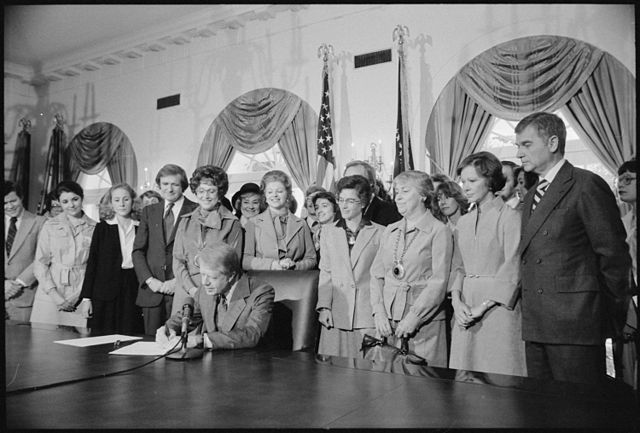“We shall not be safe until the principle of equal rights is written into the framework of our government.” -Alice Paul
Equal Rights in the United States has been a problem for hundreds of years. In order to help solve this problem people have been fighting hard to get the Equal Rights Amendment (ERA) passed in all states. The ERA is a proposed amendment to the United States Constitution designed to guarantee equal legal rights for all American citizens regardless of sex and seeks to end the legal distinctions between men and women in terms of divorce, property, employment, and other matters. The question now is why hasn’t this amendment been passed and what can we do to get the ERA ratified by these states that have not agreed?
For over one hundred years activists have been trying to fight for equal rights starting in 1848 when it was first introduced by Elizabeth Cady Stanton and Lucretia Mott.The first public demand for women’s suffrage was at the first Woman’s Rights Convention in Seneca Falls, New York where Stanton and Mott brought up their needs and beliefs of equal rights in the U.S. The problem was brought back up 1923 when Alice Paul introduced the ERA in Seneca Falls. During her remarks at Seneca Falls, Paul said, “If we keep on this way they will be celebrating the 150th anniversary of the 1848 Convention without being much further advanced in equal rights than we are,” showing no effort was being put in to find a resolution to this problem in our country. Paul’s main goal was to expand the rights guaranteed by the U.S. Constitution to both genders as she said, “We shall not be safe until the principle of equal rights is written into the framework of our government.” Unfortunately, the amendment wasn’t passed by Congress in 1923 and was finally passed in 1972 by the U.S. Senate and was then sent to the states for ratification. During these years many supporters of the Equal Rights Amendment lobbied, marched, rallied, petitioned, picketed, went on hunger strikes, and committed acts of civil disobedience to push the ratification of the ERA. By 1982 the amendment needed to have 38 states ratify, but was three short with only 35 ratifications and was unable to pass the amendment. The amendment is still trying to get passed in the 15 states that have not yet agreed with the amendment being passed. With states slowly ratifying the amendment it is very clear that the fight for the ERA to pass and the beginning of equal rights is definitely in the future.
The Equal Rights Amendment is the most efficient way to find a solution to the problem of unequal rights. Without the ERA, the U.S. Constitution does not explicitly guarantee that the rights it protects are held equally by all citizens without regard to sex. Still, the only right that the U.S. Constitution specifically applies is the right for both men and women to vote. In the Equal Rights Amendment is “Equality of rights under the law shall not be denied or abridged by the United States or by any state on account of sex,” showing that sex discrimination will end completely if the amendment is ratified. Many other problems such as sex discrimination in court and legal battles with change for the better if the ERA is passed. The ERA would provide a clearer judicial standard for deciding cases of sex discrimination. Not every state in the U.S. has ratified the Equal Rights Amendment, and therefore federal and state courts are inconsistent in their rulings regarding claims of sexual discrimination claims. The ERA would also help end women regularly and occasionally men having to fight long, expensive, and difficult legal battles in an effort to prove that their rights are equal to those of the other sex. Along with many other reforms, the overall goal of passing the amendment is for women to get rights that men are born with without any chance of discrimination or restriction of rights in the U.S.
While some laws do protect women from gender-based discrimination, some people have stretched how the laws can be interpreted and enforced, often creating the opposite of what the laws originally intended.
The Equal Rights Amendment is the best way to give women the rights that they deserve and have wanted for hundreds of years. Women have been fighting for this problem generation after generation and are finally given the chance to secure their rights through the ERA. The Equal Rights Amendment needs to be passed to give women want they deserve and have deserved from the start.




































